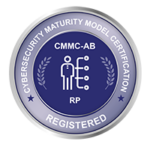Technology advances and new IoT innovations, along with a growing number of an organization’s endpoints, have increased the probability of network penetration. Cyber threats are more abundant and dangerous than ever before, underscoring the need for efficient endpoint security strategies. Unfortunately, while the technology and capabilities of the endpoints themselves have advanced considerably, the common security solutions being utilized to protect them has lagged far behind – leaving organizations to deal with many significant challenges while trying to manage and secure their mobile endpoints.
Understanding the major threats targeting mobile endpoints, along with the critical aspects of mobile endpoint security that organizations need to adopt, while aligning to the needs and expectations of the end users, will be key to overcoming the challenges associated with building a strong endpoint security posture. Let’s take a look at the three most common challenges organizations experience in mobile endpoint security and how SyncDog can help.
Multiple vendors and solutions
In order to combat today’s sophisticated mobile cyber threats, organizations need to ensure their security strategies encompass all the critical aspects of mobile security, such as Mobile Device Management (MDM), Enterprise Mobility Management (EMM), Data Encryption and Loss Prevention (DLP) and Mobile Threat Defense (MTD), all while maintaining compliance with industry regulations and frameworks. As a result, many organizations end up relying on multiple vendors to achieve a stronger security posture, which can be challenging and sometimes even counteracting. Not only is it costly and time consuming to deploy and maintain numerous vendors and solutions, but it can end up hindering productivity across an organization’s workforce and negatively affect the end user experience. Additionally, organizations who cannot afford to deploy multiple vendors will end up having gaps in their mobile security posture, which increases their chances of experiencing a security incident. A recent survey found that 96% of surveyed IT decision makers have specific mobile security solutions in place, either on the end users’ device or within their organization, with over 4 in 5 using mobile device management as a mobile security solution. Using MDM or EMM as a sole solution for mobile security does not provide adequate protection and leaves organizations at increased risk.
High Cost of Corporate Issued Devices
Organizations hesitant to adopt Bring Your Own Device (BYOD) policies opt for issuing corporated-own devices so they have greater control over their workforces’ device landscape. By issuing corporate devices, IT teams aspire to control and limit data and app usage on devices while ensuring security protocols are always up to date. Unfortunately, issuing corporate-owned devices can come with a high cost. Not only do organizations have to pay for the physical devices, but also the cell phone plans and security technologies installed on them – and then quickly realize that end-users still find ways to use them for personal access. Organizations that do not have the means or desire to issue corporate-owned devices and therefore rely on BYOD policies, often fall short in adequately securing them. Finding the correct balance between personal privacy and security is often untenable by using MDM solutions alone. As a result, one survey found that 50% of companies that allowed BYOD were breached via employee-owned devices, underscoring the mis-use of MDM tools and insufficient security in BYOD environments.
Lack of Productivity Due to Security Controls
End users often look at security as the enemy, because many security technologies are too focused on limiting access and privileges, which hinder productivity in the workplace. Employees constantly have to work with IT team members to work around security technologies to be able to do their jobs. This eats up valuable time for both end users and IT staff. As a result, many organizations are faced with the decision between increased productivity or increased security. This choice proved to become even more challenging during the era of remote working, where many organizations (44%) claimed that they had to postpone cybersecurity initiatives to focus on remote work set up. This demonstrates that enterprises struggle to balance productivity and security, and oftentimes security ends up getting neglected.
—
As cybercriminals increasingly target mobile devices, it’s imperative for enterprises to prioritize the security of their mobile endpoints. SyncDog’s Trusted Mobile Workspace is the first fully integrated end-to-end mobile security solution. SyncDog’s holistic solution provides enterprises with the full range of capabilities such as MDM, EMM, MTD, Containerization, Data Loss Prevention (DLP), Device Protection, and Data Encryption – all boosted by a set of productivity tools to enable users to get their work done not matter where they are. The whole suite of solutions are offered from a single vendor, from a single download and centrally managed in a single administrative console.
With SyncDog, it doesn’t matter if the device is iOS or Android, Windows or MacOS, Managed or Unmanaged, Corporate-owned or Personal (BYOD). SyncDog protects and manages devices, controlling access to apps, defending against phishing and malware, and encrypting and isolating all corporate data, files and apps accessed by or stored on devices, simplifying set-up and management and improving productivity. To learn more about SyncDog’s Secure.Systems, request a demo today!
